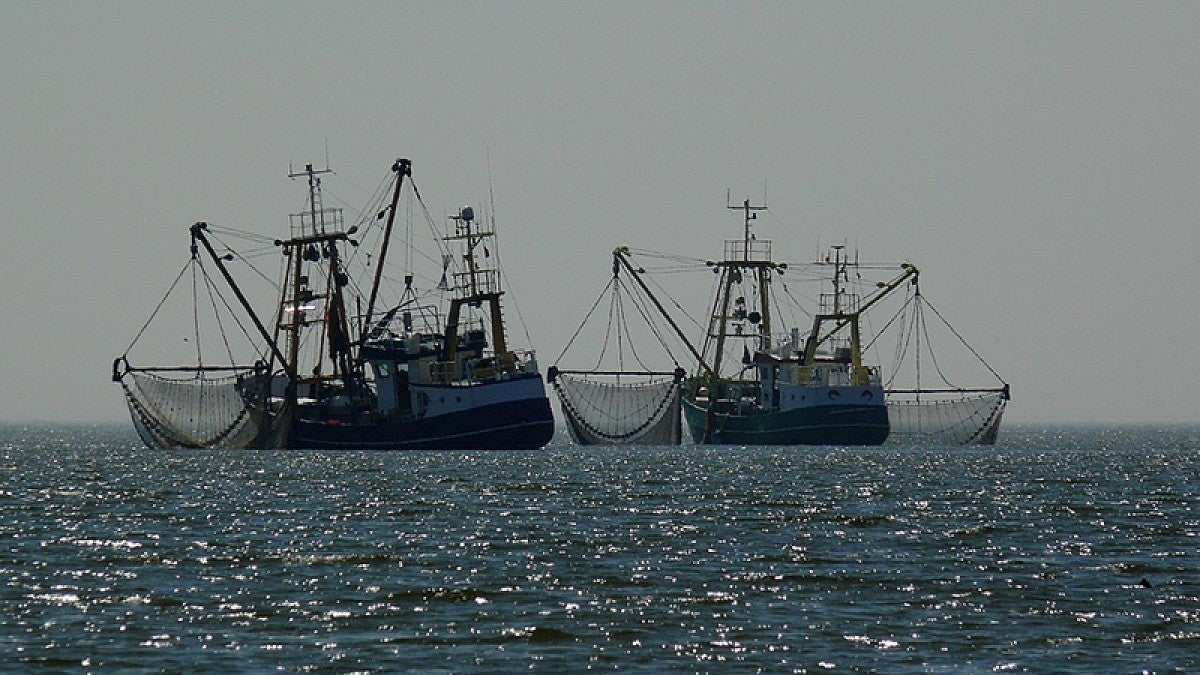With a closure looming in an international fishing area in the South Pacific, fishing increased 130 percent and efforts designed to replenish fish stocks were set back 18 months, according a study co-led by a UO economist.
That response, ahead of the Jan. 1, 2015, closure in the Phoenix Islands Protected Area, was a normal human behavioral adaptation, said Grant McDermott, who joined the Department of Economics last fall. It is one, he said, that should be considered when moving to implement closures with specific benefits in mind.
RELATED LINKS
“People are not stupid,” said McDermott, who worked with three researchers at the University of California, Santa Barbara on the study. “Fishermen know an area is going to close, they will fish it more extensively. That’s exactly what we see in the data. They act rationally in the face of well-intentioned but improperly designed policies.”
The study, "The blue paradox: Preemptive overfishing in marine reserves," was based on satellite tracking of ship movements. It published this week in the early edition of the Proceedings of the National Academy of Sciences.
The Phoenix Islands Protected Area, about the size of California, is located in the Republic of Kiribati between Australia and Hawaii. It is one of the world’s largest marine reserves. A nearby area, around the Line and Gilbert Islands, which was not subject to closure, was used for comparison. The two regions have similar fishing stocks, including skipjack, yellowfin, bigeye and albacore tuna.
The data, made available by Global Fishing Watch, drew from signals from onboard automatic identification systems that ships use for navigation safety. The researchers parsed the data for ships exhibiting common fishing operations such as trawling and longlining from Jan. 1, 2012, to Dec. 31, 2016. As of the closure date, fishing patterns in the reserve ceased.
Video shows a surge of movement by ships, including fishing vessels, in the Phoenix Islands Protected Area (center area outlined in red) prior to its Jan. 1, 2015, closure
“Fishing, like a lot of extractive industries, have been out of sight, out of mind,” McDermott said. “Now, thanks to satellite data through remote sensing, we are able to get an unprecedented view and insight into what’s happening.”
Such closures are incentives for people to rush to extract what profits they can obtain before losing a source to closure, said McDermott, who became an affiliated research partner with Global Fishing Watch as a postdoctoral fellow at the University of California, Santa Barbara.
Similar adaptations in human behavior are common, the researchers noted. Landowners rushed to deforest their properties prior to the implementation of the Endangered Species Act to protect the red-cockaded woodpecker, and sales of firearms increased amid talk of gun control following the Sandy Hook school shooting in 2012.
“The mechanism underlying any kind of pre-emptive resource extraction is usually thought to involve secure property rights,” McDermott said. “People are incentivized to use resources while they still claim ownership and use rights over them. Here, we see the same kind of behavior in a marine setting where property rights are, at least nominally, far from secure. This is pretty surprising.”
The findings shed light on some of the puzzling aspects of marine reserves, including why predicted conservation effects are not realized, he added.
“This study gives us one reason. You are essentially beginning from an impoverished starting point,” McDermott said. “One potential solution is to reduce the time between the announcement or planning phase of a reserve and the actual enforcement date. It’s difficult to balance, though. You need to have buy-in from your various stakeholders, and that takes time.”
A longer-term danger is that the human response conceivably could push the ability to realize a goal — to save an area’s fishing stocks, for instance — to a tipping point from which a policy’s objective cannot be realized.
Kyle C. Meng, Gavin G. McDonald and Christopher J. Costello were coauthors on the study, which was funded by the Waitt Foundation and Google.
—By Jim Barlow, University Communications


